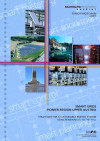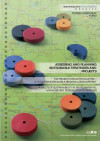Suchergebnisse für "Factsheet: Energietechnologien gestalten, die für alle sinnvoll und nutzbar sind"
Development of a new generation of grid-connected PV inverters
Improvement of operational parameters (efficiency, quality of current waveform, reduced size and weight) and reduction of manufacturing costs
Research and Innovation for Heating and Cooling with Renewable Energy Sources

position paper related to biomass, geothermal energy, solar thermal energy and heat pumps in order to support persons responsible for Austrian energy research programs to define main research and innovation topics for renewable heating and cooling within these programs
Schriftenreihe
28/2014
Englisch
IEA C3E Workshop Women in Energy
11. April 2019
Haus der Forschung, Ground floor, Sensengasse 1, 1090 Vienna
Learning from International Initiatives and Austrian Good Practices
Smart Grids Pionier region Upper Austria

Strategies for a sustainable energy system using renewables to the full
Forschungsforum
1/2011
Herausgeber: BMVIT
Englisch, 6 Seiten
Downloads zur Publikation
Sanierung PRO!

The goal of the project is the development of a guideline, which supports builders and planners or consultants in the organization and monitoring of inhabitant integration into the reorganization processes of multi-storey housing.
aspern Vienna´s Urban Lakeside - subproject 6a: Energy Consumption Monitoring
This subproject of the flagship project "aspern plus" derived the basis for a centralised monitoring of the energy consumption in Seestadt aspern.
Company communication strategies for sustainability
Based on a representative empirical study among ultimate consumers (1000 interviews) and an empirical survey among 200 model companies in regard to sustainable management, communication strategies and concepts are developed.
IEA SHC Task 65 Expert Meeting & Industry Workshop
23. March - 24. March 2023
Fakultätsratssitzungsaal, SOWI 3OG, Universität Innsbruck, Innrain 52, 6020 Innsbruck, AT
The regular Expert Meeting of IEA SHC Task 65 focuses on innovations in solar cooling for global Sunbelt regions and will be followed by an industry workshop on solar cooling.
Assessing And Planning Sustainable Strategies And Projects

The Project Innovation Matrix - A Tool For Sustainable Regional Development Aspects Of Sustainability In Environmental Management Systems For Enterprises
Forschungsforum
1/2003
Herausgeber: BMVIT
Englisch, 6 Seiten
Downloads zur Publikation
Pioneer Region for Smart Grids in Upper Austria
Worldwide a change of energy systems takes place. The increased use of renewable energy leads to a decentralization of energy supply and therefore active control systems for the energy supply systems will be necessary.
Einfach:wohnen, Phase Construction

Support for the erection of the demonstrative housing project consisting of 7 houses (5 Low energy houses, 1 passive house and 1 "next to passive house")
CICA - Chlorella in circular aquaculture
Project CICA allows the detailed investigation of fish wastewater and its treatment by algae cultivation, as well as the design and construction of a special photobioreactor to purify wastewater and produce fish at the same time.
NATHPRO: Development of NATural fiber High performance pultrusion PROfiles (SUSPRISE Joint Call)
Development of strong, light, weather and heat resistant natural fiber profiles by combining the the advantages of a pultrusion technology with the advantages of natural fibers.
SolarUpdate Vol. 51 (November 2009)

Newsletter of the IEA Solar Heating and Cooling Programme, Topics: Renovating houses to meet high energy standards, Solar Forecasting to Support District Heating in Austria, country spotlight - solar thermal in france, Solar + Heat Pumps, Harmonization of Testing Standards and Certification Requirements
Englisch
4th generation district heating: implementation - First webinar (TS2)
17. June 2019
Online
Low temperature district heating installations are taking off. More than 100 installations have been identified across Europe. Join the TS2 team for their first results on how to implement low teperature district heating!
International Conference on Solar Heating and Cooling for Buildings and Industry
4. - 7. November 2019
Santiago, Chile
The SHC Conference is a platform for the international solar and renewable energy community. Special emphasis lies on energy and buildings, solar heating and cooling, solar energy for industry, solar desalination and topics specific to the region.
Workshop: Life in the Fast Lane - Evolving Paradigms for Mobility and Transportation Systems of the Future
26. - 27. October 2016
Washington, DC
A Workshop to Determine Research & Development Needs and Supporting Policies.
Webinar: The past, present and future for biomass gasification
30. January 2020
Webinar - online, AT
The IEA Bioenergy Webinar Series are dedicated to various topics in the field of bioenergy. This time the past, current situation and outlook into the future of thermal gasification are discussed.
HY3GEN - A Regenerative Building
The "third generation hybrid building" (HY3GEN), whose main features are being defined in this project, has expanded this approach to include the integration of aspects of efficient resource utilization in construction and operation as well as the use of regenerative raw materials and renewable energy.
S I P settlement models in passive house quality
Research, development and realization of integral building concepts in passive house quality!
